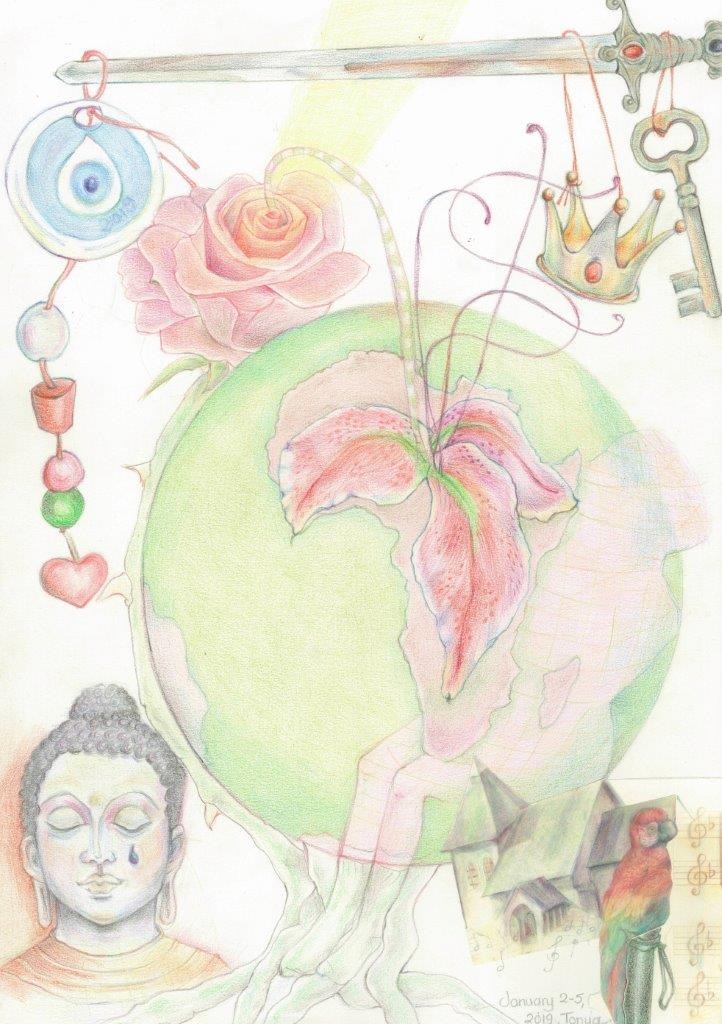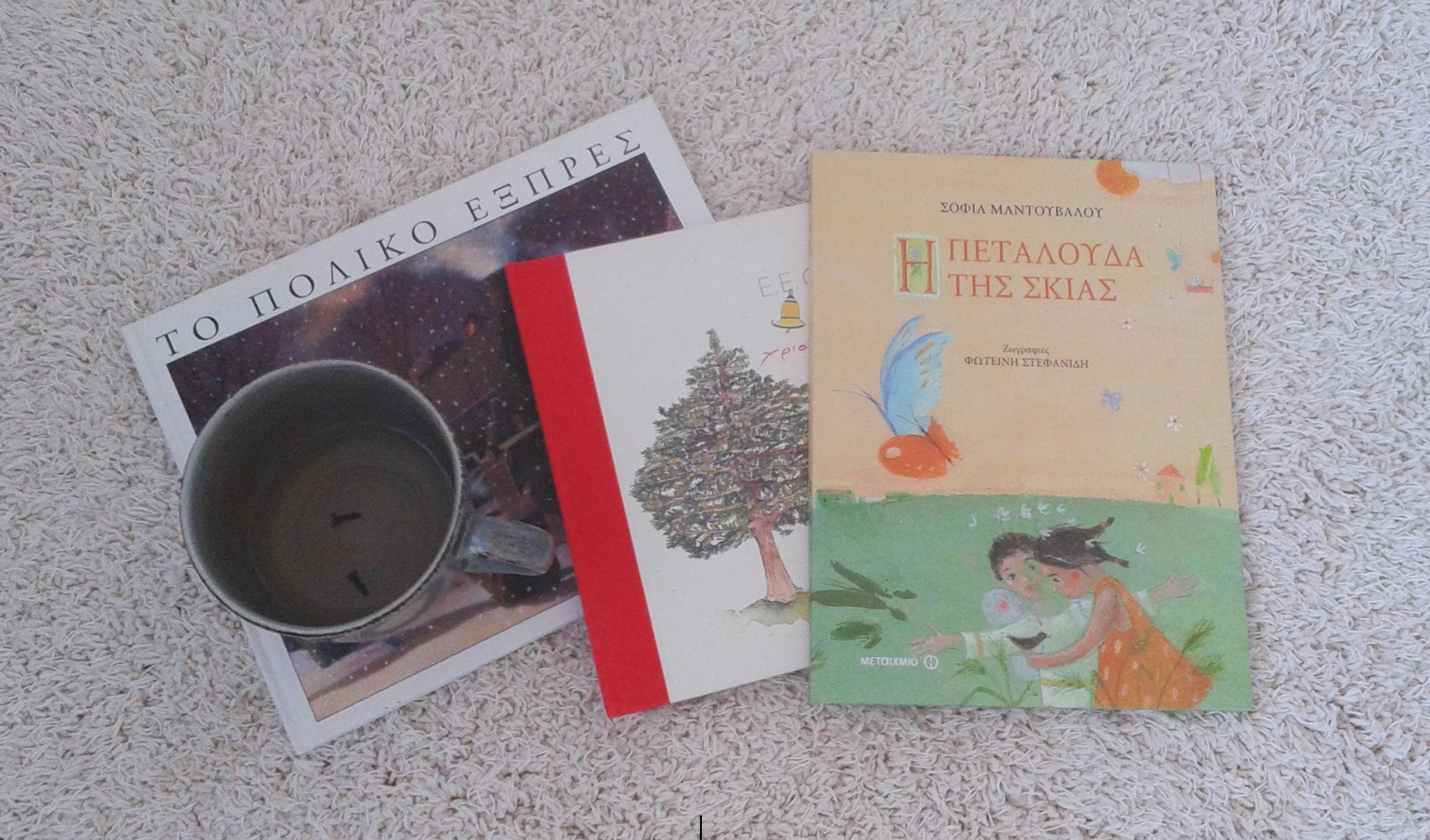‘Με λενε Ψυχαλούδα και είμαι η ψυχή της αγάπης. Εσένα πως σε λένε, τσαλακωμένη μου πεταλούδα;’
‘Με λενε Αφχάρ, δηλαδη Χαρά, και είμαι κι εγώ μια από τις ψυχές της αγάπης που καταφέρνουν να φτάσουν μέχρι εδώ.’
‘Γιατί η σκιά σου είναι μισή και κάτι; Τι έπαθα το άλλο σου φτερό;’
‘Το χτύπησε ο πόνος και πληγώθηκε’ λένε τα μάτια της ξένης πεταλούδας…’ (Η πεταλουδα της σκιας, Σοφία Μαντουβάλου, Εκδόσεις Μεταίχμιο)
I think in the 1990s the main focus of healing and growth was on the wounded inner child that carried our hurts and traumas, but there is another aspect of our inner world that we can tap into, which contains the characteristics of the child archetype, if we want to use this term, and is that part of us that is innocent, curious, playful, creative and expressive and wants to be seen, acknowledged and heard. Charles Whitfield (2001) writes that the concept of the inner child has been part of our universal culture for at least 2,000 years, and that among others Alice Miller and Donald Winnicot refer to it as our true self. In the introduction of his book Healing the Child Within he writes that our inner child is that part of the self that lives, acts, creates and feels satisfaction, but with the aid of our often unaware parents and the support of our society most of us end up denying our inner child that is our authentic self. Carl Jung said that ‘in every adult there lurks a child, an eternal child, something that is always becoming, is never completed, and calls for unceasing care, attention and education. This is part of the human personality which wants to develop and become whole’. Having access to the different parts of ourself or archetypes can help us move into wholeness. Connecting to our inner child is like finding a portal to our soul. Calling on our child archetype, in particular, can assist us in tapping into new possibilities, creativity and emotions, and also, maybe begin to recapture the lost opportunities of play and wonder. This part of ourself holds our quirky uniqueness, which has often been supressed by others or/and abandoned by us. Many societal contexts, authority figures, and even our peers are conducive to the repression of our creative spirit; however, too much repression of this child archetypal energy can keeps us obedient and stuck in boxes and unimaginative lives. But life requires we sometimes call on childlike qualities like wonder, curiosity and thirst for learning, creativity and play. Connecting to this aspect of our psyche can lead to new discoveries and gifts, and a less fearful or cynical and more loving and compassionate nature.
We catch glimpses of this part in us when we are playing, being creative, doing art, having fun, interacting or playing with our children or engaging with our adult hobbies and ‘toys’. A few days ago I watched the new Mary Poppin’s film, which brought delight to both the adult me and my inner child. The entire movie is filled with amazing visuals and inspiring lines, and I must admit that I gleaned a lot of new insights from my adult perspective. I think the line ‘you’ve forgotten what it’s like to be a child’ is one underlying theme in the film. We often forget what it was like to be a child, and also, what we knew as children to be true. Maybe Mary Poppins has captured the collective imagination for so long because she seems to open the door to our deeper knowing and imagination as she creates opportunities for the children to explore the unknown and ask questions and then gives them space to create their own meaning and find their own authentic perspectives. She seems to effortlessly integrate the demands of daily life with a fantasy world, the conscious with the unconscious, the visible with the invisible. She is efficient at critical thinking and also has a rich unbounded imagination.
Another thing I did over these last few weeks, which I am sure gave lots of pleasure to the child within me, is buy a new children’s book, The Butterfly of the Shadow / Η πεταλούδα της σκιάς (Εκδόσεις Μεταίχμιο), written by Sophia Mandouvalou and illustrated by Fotini Stefanidi. I had not indulged in something like this for ages, but I have always loved children’s books. JK Rowlings says ‘if it’s a good book, anyone will read it. I’m totally unashamed about still reading things I loved in my childhood’ and Gretchen Rubin writes: ‘truly great picture books are engaging at any age, beautiful and beautifully written, and yet we don’t think of them as something we would seek out as adults. And when we think of enjoying “art,” it’s easy to imagine going to a museum–but the pleasure of art comes in many forms, and the art of picture books is a delight. Also, at least for me, reading picture books brings back many happy memories, and that’s a happiness-booster, as well……Recently, I made a list of some of my favorite lines from classic children’s picture books. This is my favorite kind of thing to do. I love quotes, and I love picture books’ (from https://gretchenrubin.com/2012/08/whats-your-favorite-line-from-a-childrens-picture-book/). These can all be activities that nurture our inner child, imagination and creativity. Anyway, Sophia Mandouvalou has written 80 books for children among other things. She claims that she belongs to the citizens of the world who are working for the daily revolution of reality for a better world. She writes: ‘From a very early age I remember my heart opening to allow the joy and grief of my friends to come in and become her own. As I got older, my tendency to show compassion and sympathy, to try to understand others and to identify with their feelings also grew. Until, without my even being aware of it, ‘I feel with you’ became a way of life … Later I learned that this ability is called empathy and is essential for a better world ‘. (Η Σοφία Μαντουβάλου δηλώνει πως ανήκει στους πολίτες του κόσμου που εργάζονται για την καθημερινή επανάσταση της πραγματικότητας για έναν καλύτερο κόσμο. Εχει γραψει 80 βιβλία για παιδιά μεταξύ άλλων. Η ίδια γράφει: ‘Από πολύ μικρή θυμάμαι την καρδιά μου να ανοίγει για να μπει η χαρά και η λύπη των φίλων μου και να γίνει δική της. ΄Οσο μεγάλωνα μεγάλωνε και η τάση μου να δείχνω συμπόνια και συμπαράσταση, να προσπαθώ να καταλάβω τους άλλους και να ταυτίζομαι με τα συναισθήματα τους. ΄Ωσπου το ‘αισθάνομαι μαζι σου’ έγινε χωρίς να το καταλάβω τρόπος ζωής. … Kάποτε έμαθα πως αυτή την ικανότητα την λένε ενσυναίσθηση και είναι απαραίτητη για ένα καλύτερο κόσμο’.)
